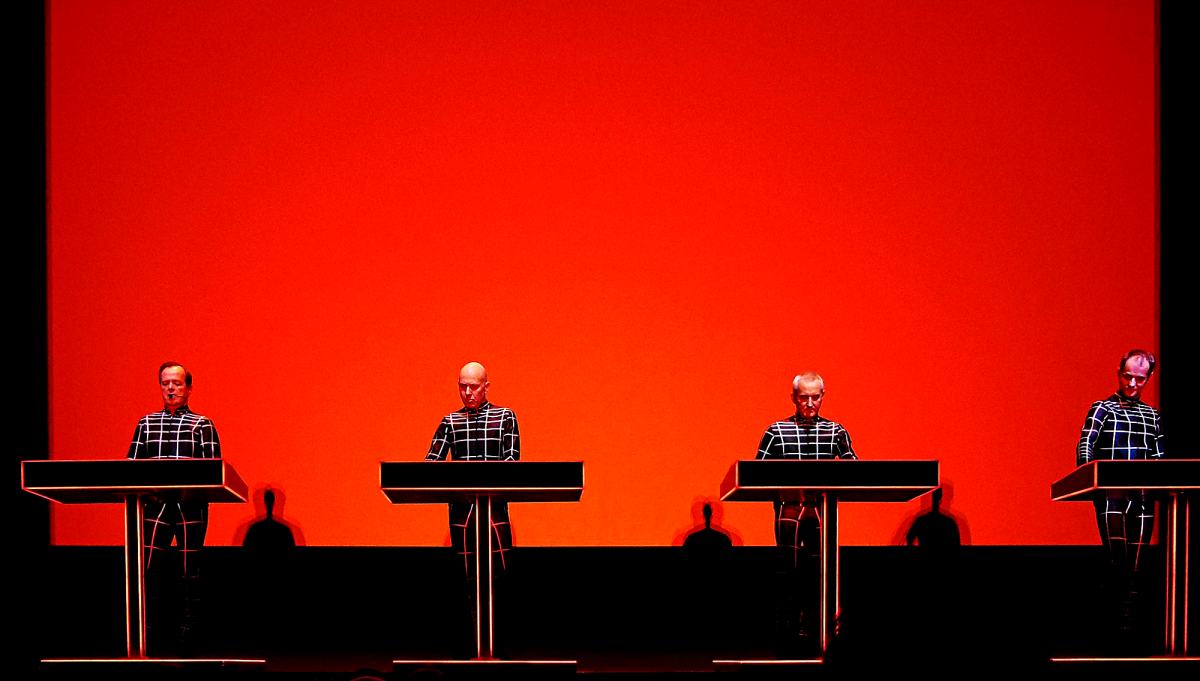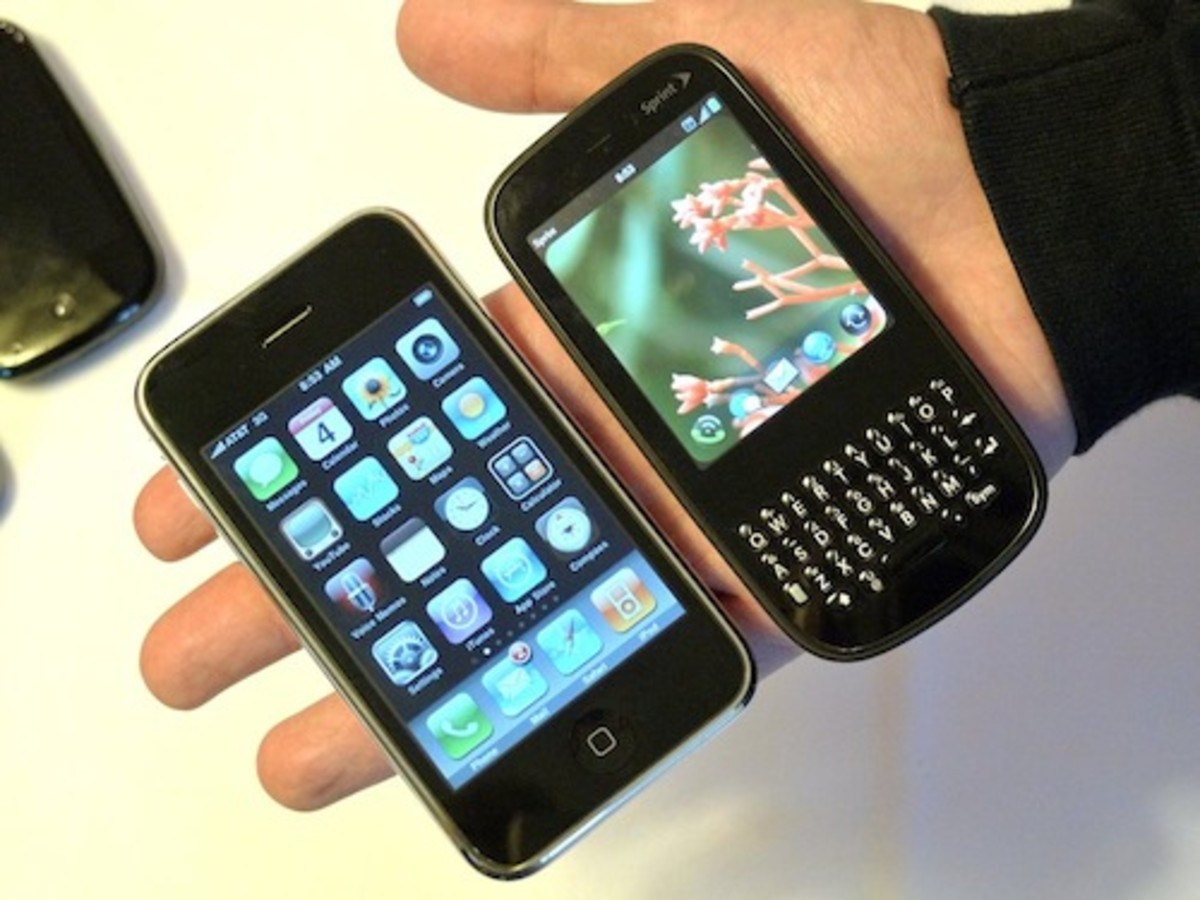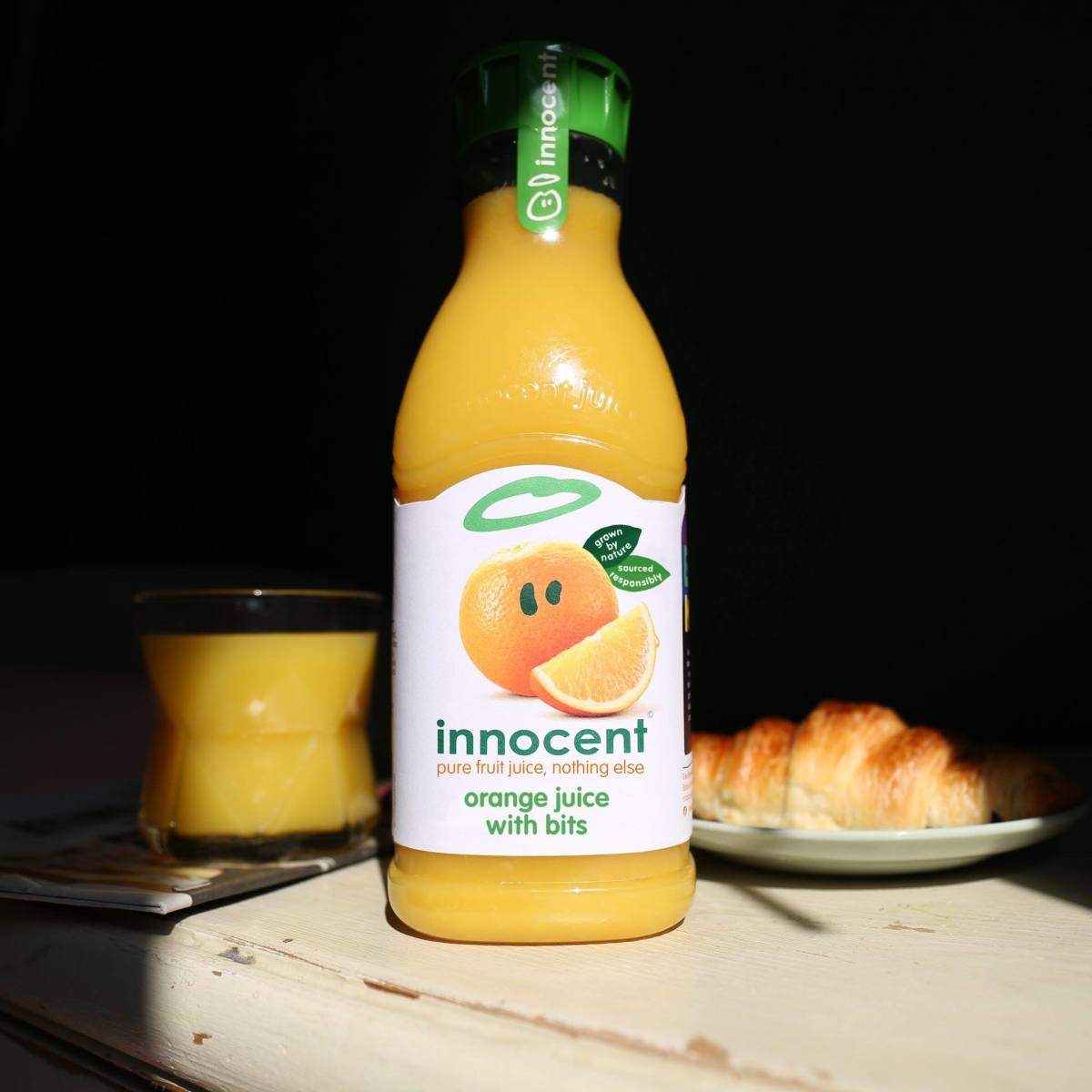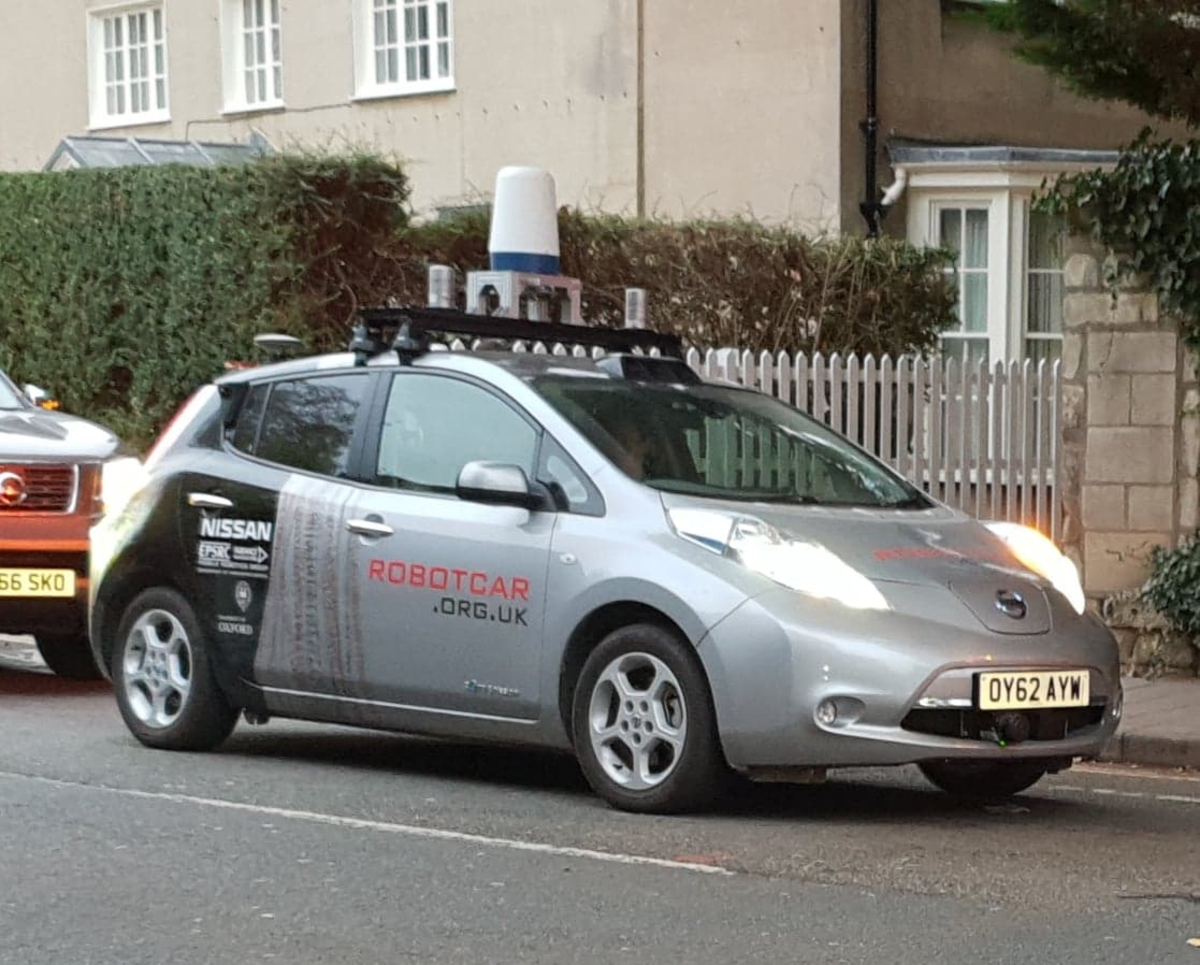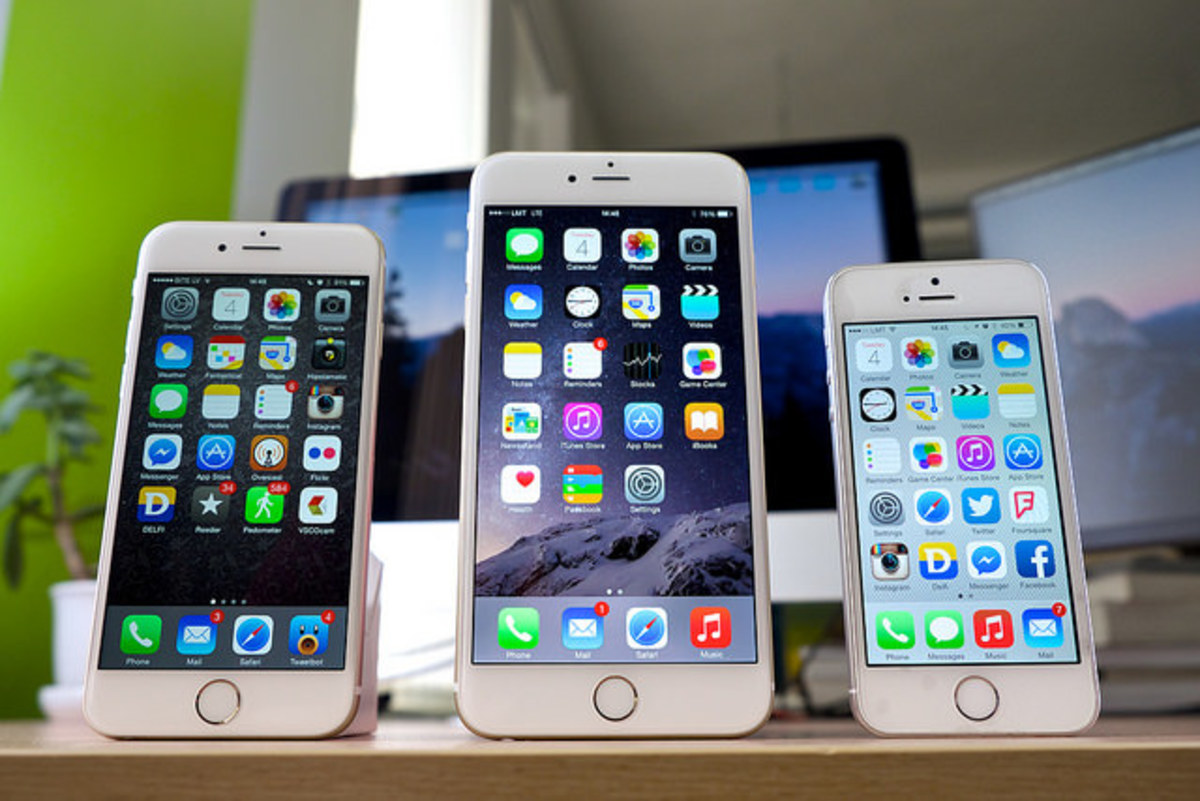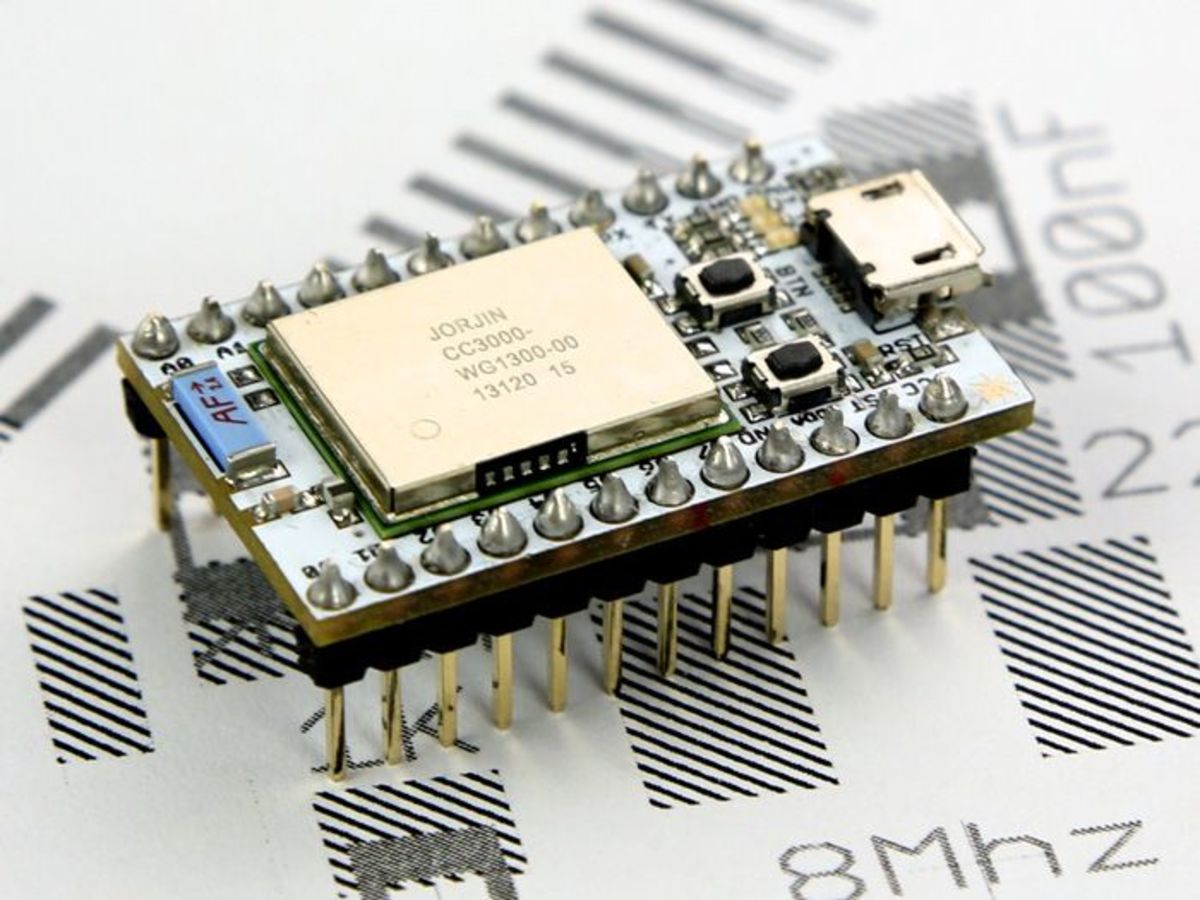The Latest Interactive Technologies
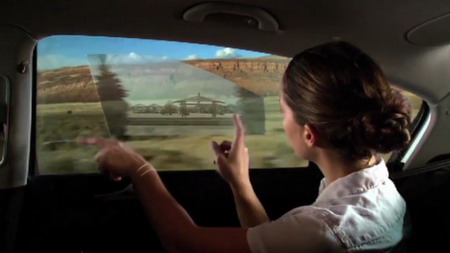
Introduction
Interactivity has become the heart of imagery in the 20th century as technology is being increasingly relied upon to communicate messages to the public in innovative, attention-grabbing ways through the manipulation of images and sometimes even gravity. The technology that has been released in the last five years is a clear indication of the type of visual communication that will captivate artists, consumers and entrepreneurs, decades into the future. Visual communication that allows for one-on-one interaction, a customizable interface and personalized feedback is winning the favor of shoppers, thinkers, internet users and creators.
The majority of people have yet to experience the increasing levels of interactivity being infused into visual communications by way of the latest technologies. But the evolution of visual communication is a journey well worth following because of the eventual impact this new technology will have on our daily lives as consumers. Tech Junkie or not, you can count on seeing the gadgets that are revolutionizing communication in your local shopping mall, grocery store, workplace and possibly even your home which is why it’s important to become well-acquainted with the newest interactive technologies to hit the market. Whether these interactive electronics are fads or here to stay remains to be seen, but if the oohs and aahs from the public are any indication, interactive visual communication isn’t going anywhere.
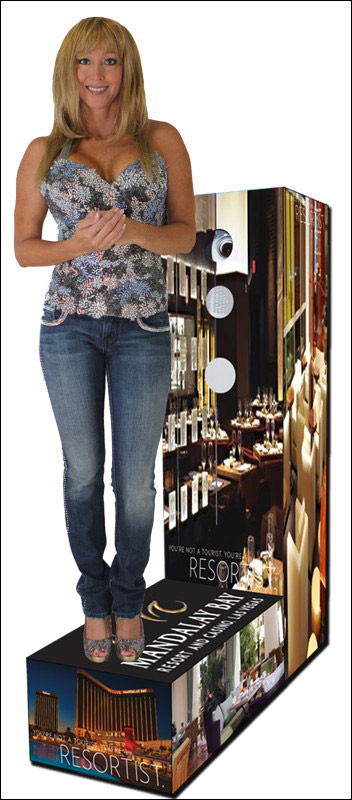
Hologram Greeters
The vision care area in a Plant City Wal-Mart store is getting much more attention than usual after Eye See Solutions invested in a hologram woman to stand in front of the Wal-Mart vision care space, in-place of an employee (Girard). These “holographic greeters” are gaining popularity amongst business owners who prefer to pay $2 to $3 per hour in leasing costs for the hologram, rather than $8 to $10 per hour to hire an employee (Girard). The woman standing in front of the vision care space explains the importance of getting eye exams as fascinated passers-by stop and stare.
The office manager of Wal-Mart’s vision care department says that the Plant City Wal-Mart located In Florida, has seen a 60 percent increase in sales and a 50 percent increase in eye exams since last November when the hologram greeter was installed (Girard). Though Wal-Mart employees say that the greeter is the best thing to have happened to the vision care center, experts say that the lack of human interaction could negatively impact the department in the long run (Girard). Once the initial wow factor is diminished, experts question whether shoppers will continue to find the hologram informative or if they will prefer to be greeted by an actual employee who can answer customer specific questions (Girard).
Zebra Imaging Hologram Company
Aside from marketing products, holograms are now being integrated into daily visual communications that occur in classrooms and workplaces. This relatively new concept is taking hold fast amongst business owners and government and military officials who are constantly searching for more effective ways to communicate with workers (Eisenberg). The Defense Department is a frequent customer of Zebra Imaging, a company that sells hologram prints out of Texas (Eisenberg). The Defense Department sends the company computer files which contain data to be made holographic, for instance, troop formation on an Afghanistan battlefield (Eisenberg). Other customers include FMC Technologies, a company that uses holograms to depict 50,000 pound oil tanks, at trade show demonstrations (Eisenberg).
Tina Murphy, an HNTB engineer uses holograms to bring construction blue-prints to life; she says, “We can show them to plant operators, lawyers, regulators and engineers . . . With this one visual image we can all communicate.” Though holograms are not being used for entertainment purposes they currently assist professionals in developing new technologies and improving communication through visual enhancement.
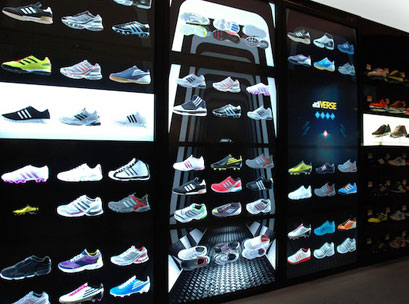
Large Touch Screens in Department Stores
Large touch-screens are another method of interaction that companies such as HSN, Adidas and Macy’s are installing in stores, giving customers the option between an offline shopping experience and an online one (Hadley). The 7-foot kiosk in a Macy’s Beauty Department, has touch screens on both sides and allows customers to search for specific beauty products and get an exact location in the store without having to jump from beauty counter to beauty counter trying to find a product (Hadley). Macy’s spokesman says that these interactive screens are a great option for customers who walk into a store and know what they’re looking for, or for customers who would prefer to shop without the assistance of a sales associate (Hadley)
In a London Adidas store, a recently installed virtual wall is responsible for a 500 percent increase in the sales of a particular soccer cleat which has been prominently displayed on the wall for some time (Hadley). The virtual wall features a touch-screen portion which allows customers to view up-close representations of a product and the inspiration behind product design; a twitter feed with customer comments about certain Adidas products is another feature (Hadley). Customers who already know their shoe and clothing size can add products to an online cart using the wall and be directed to a checkout counter specifically for virtual wall purchases (Hadley).
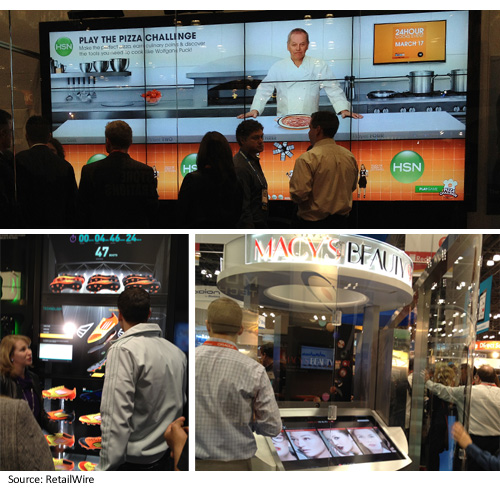
HSN Digital Pizza-Making Game
HSN, a company known for selling products through their television network, has developed a similar “virtual wall” in a grander scale. The 15-foot HSN touch screen wall is making its debut, primarily in malls and airports (Hadley). The touch screen interacts with passers-by through a digital pizza-making game that allows people to step-up and customize a pizza to fit their preferences, using chef Wolfgang Puck products sold by the company (Hadley). They have the option of getting an email sent their phone which directs them to the HSN website to purchase the products they used to make their pizza (Hadley). The pizza-making game is the only interactive experience currently offered using the virtual wall. However, HSN plans on developing similar interactive experiences that can be used to market products and personalities (Hadley).
The ground-breaking advantage of implementing interactive, online shopping experiences using touch screen in public locations is the potential increase in profit for business owners. Inventory is typically limited to the size of a store but with online shopping as an alternative, business owners can still make a profit off products that have already sold-out in stores (Hadley). The online shopping experience offers customers the option of having products that are not available in stores, shipped from various locations to their home (Hadley). Mitch Joel, president of Twist Image, a digital marketing agency says,
“The limitations that were there prior were based on how much product were in a physical location . . . You no longer have to have that issue. You can have a store in Peoria and sell as much inventory as if you were in Times Square.”
Retailers offering an online and offline experience in a single location are giving shoppers a new and exciting means of visual communication and as a result, shoppers are opening their wallets more often.
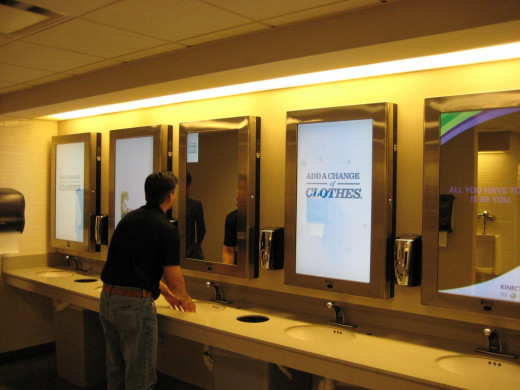
Interactive Mirrors
Touch screens aren’t the only interactive electronics helping retailers increase their income; the company Mirrus has developed a new interactive mirror which has been installed in 3,000 locations such as department stores, airports, entertainment venues and beauty salons (Girard). When a customer tries on an outfit and steps in front of the interactive mirror, it suggests accessories that go best with that outfit and lists their location in the store (Girard). When the mirror isn’t being used, retailers can use it play videos such as, “the best way to apply eye make-up” or “clothing that best suits different body types” (Girard). Unlike touch screens, the interactive mirror speaks to the customers’ individual needs by suggesting outfit specific products.
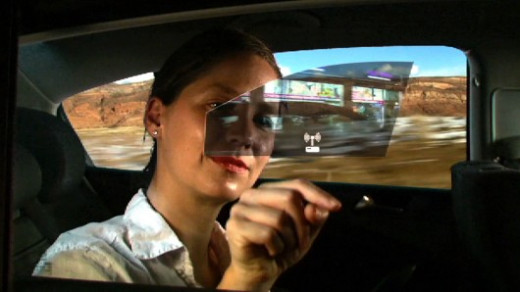
General Motor's "2012 Advanced Tech Window"
Another innovative gadget to redefine the visual communications field is General Motor’s latest gadget, “The 2012 Advanced Tech Window”. GM collaborated with the art and design students of Israel’s Bezalel Academy to develop a set of apps that can turn car windows into a tablet (Squatriglia). GM’s, “Windows of Opportunity Project” was created in response to psychological studies that say car passengers tend to feel disconnected from their surrounding environment (Squatriglia). Tom Seder, who leads GM’s R&D team says,
“Advanced windows that are capable of responding to vehicle speed and location could augment real world views with interactive enhancements to provide entertainment and educational value.”
General Motors told students to go as crazy as they wanted with the project since the company has no plans of integrating this technology into assembly-line cars anytime soon (Sqautriglia). Four apps were created for the tablet passenger windows which take the form of animated characters (Squatriglia).
Otto, is a character that responds to scenery; Foofu is an app that allows for simulated finger painting on the windows; Spindow lets you look into other user’s car windows all over the globe and Pond allows for downloading, streaming and sharing music with other cars (Squatriglia). The futuristic apps make it possible to communicate with car passengers around the world and to visually connect with passing scenery (Squatriglia). The window is gesture-sensitive and it functions as a touch screen tablet similar to the Ipad, with the use of motion and optical sensor technology (Squatriglia). Although GM doesn’t plan on in installing the technology into production line cars in the near future, they say that the project could inspire the technology used in future models (Squatriglia).
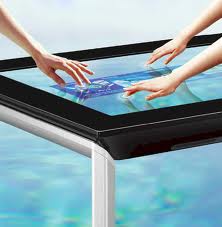
Touch Screen Table Surface
Ever walked into a restaurant with buddies and gotten seated at a booth with a 40” touch screen for a tabletop? Probably not, but Samsung’s latest creation, “The Touch Screen Table for Microsoft Surface with PixelSense” also known as “SUR40” is turning this vision into a reality (Samsung). The table uses optical tags to sense touch and objects; its multi-user interface, simultaneously responds to over 50 points of contact (Samsung). The SUR40 uses Microsoft Surface Software to customize featured applications. For instance, the touch screen can be used for educational purposes with interactive map applications and entertainment purposes with multi-user card games (Samsung).
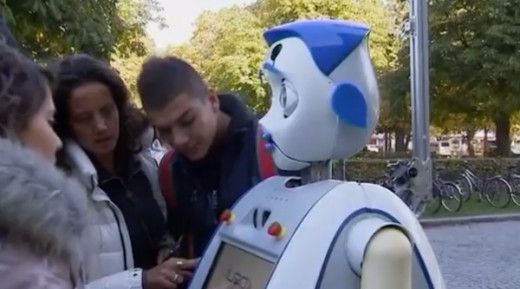
The Interactive Urban Robot
Another gadget taking visual communications to a whole new level is the Interactive Urban Robot “IURO”, created by students of the Technical University in Munich (Higgins). The robot roams the streets asking people for directions (Higgins). Using android software, it follows five basic instructions such as, go straight, turn right and turn left; when the robot reaches its destination it asks a passer-by for confirmation (Higgins). The creators of the IURO claim with certainty that as long as the robot hasn’t received false information it will eventually find its destination (Higgins).
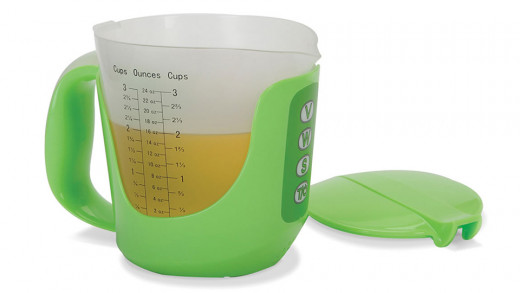
The Talking Measuring Cup
The interactive robot is visual communication brought to life but the “Talking Measuring Cup” is a part of everyday life. The handy tool sold by Hammacher Schlemmer is a glass measuring cup with an attachable base that verbalizes the amount of contents to be poured into the cup; the measurements can be read in volume or weight (Krepshaw). The “Talking Measuring Cup” has a three cup capacity and when removed from the base, is microwaveable and dishwasher safe (Krepshaw). Most measuring cups tend to be unreliable in their readings, as it is remarkably hard to get those tick marks in just the right spot, but with the “Talking Measuring Cup” the combination of tick marks and voice assisted readings, make measurements much more accurate (Krepshaw).
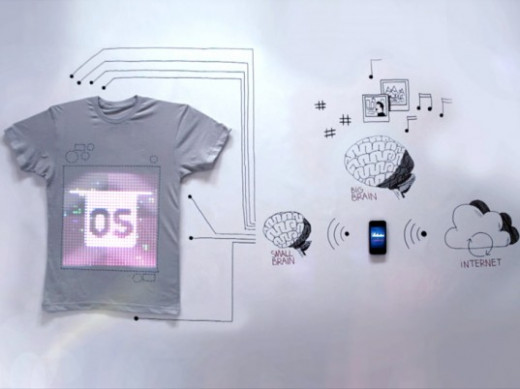
Ballantine's "T-Shirt OS"
Not only are measuring cups talking, but shirts have some statements to make as well. London’s Cutecircuit fashion line teamed up with scotch whiskey distillery, Ballantine’s to create the “T-Shirt OS” (Rudenko). The gray t-shirt appears to be ordinary but it’s actually the world’s first “wearable, sharable and programmable” t-shirt (Rudenko). It features over a thousand led lights arranged in a rectangular grid and allows the wearer to broadcast their Facebook status, Tweets or favorite pictures onto the shirt via a mobile phone app (Rudenko). The “T-Shirt OS”, equipped with a camera, speakers and a built-in microphone is a statement piece; no accessories necessary (Rudenko). The t-shirt is not currently on the market but Cutecircuit urges people to spread the word and share the creation over social media sites, in efforts to bring it to a store near you.
What's Your Take?:
Which of These Gadgets is Worth the Investment?
Conclusion
From the kitchen to the street, interactive technology is revolutionizing the way humans communicate; it’s the language of the new generation and interactivity is advancing at a rapid pace. The accomplishments to be made as a result of enhanced visual communication, are sure to be endless. It is now possible to communicate with business leaders in Beijing from a smart phone in the US. With distance no longer being a barrier to effective communication, advancing as a society is a guarantee. With the world at your fingertips, what will you create?
Work Cited
Eisenberg, Anne. “Holograms Deliver 3-D, Without the Goofy Glasses.” Nytimes. The New York Times: Business, 4 December 2010. Web 20 November 2012.
Girard, Lisa. “3 New Technologies to Make Shopping More Interactive.” Entrepreneur.com. Entrepreneur Media Inc., 8 August 2012. Web. 20 November 2012.
Hadley, Malcolm. “Touch-Screens Create Online Experiences at Stores.” USA Today. Gannett Co. Inc., 8 February 2012. Web. 19 November 2012.
Hammacher Schlemmer. “The Talking Measuring Cup.” Photograph. Hammacher.com, n.d. Web. 18 November 2012.
Higgins, Keenan. “New Interactive Robots Could Change Technology.” Vibe.com. Intermedia Vibe Holdings LLC, 12 November 2012. Web. 18 November 2012.
Krepshaw, Brian. “Count on this Talking Measuring Cup.” Cnet.com. CBS Interactive Inc., 21 September 2012. Web. 18 November 2012.
Marketing Ad Group. “Hologram Greeter.” Photograph. Entrepreneur.com, 8 August 2012. Web. 20 November 2012.
Quick, Darren. “GM’s Windows of Opportunity.” Photograph. GizMag, 18 January 2012. Web. 18 November 2012.
RetailWire. “Looking Smart: New Gen Digital Signage Raises Performance Bar.” Photograph. RetailWire.com, n.d. Web. 20 November 2012.
Rudenko, Anna. “Pure Interactivity: Some of the Best Online Interactive Projects of Summer 2012: Pure Practical Use.” PopSop Brand Magazine Online. Popsop ltd. Inc., 5 September 2012. Web. 21 November 2012.
Samsung. “Samsung SUR40 with Microsoft PixelSense.” Samsung.com. Samsung co., n.d. Web. 21 November 2012.
Samsung. “Samsung SUR40.” Photograph. Samsung.com, n.d. Web. 21 November 2012.
Squatriglia, Chuck. “GM Opens a New Window on Entertainment.” Wired.com. Wired.com Inc, 19 January 2012. Web. 20 November 2012.

